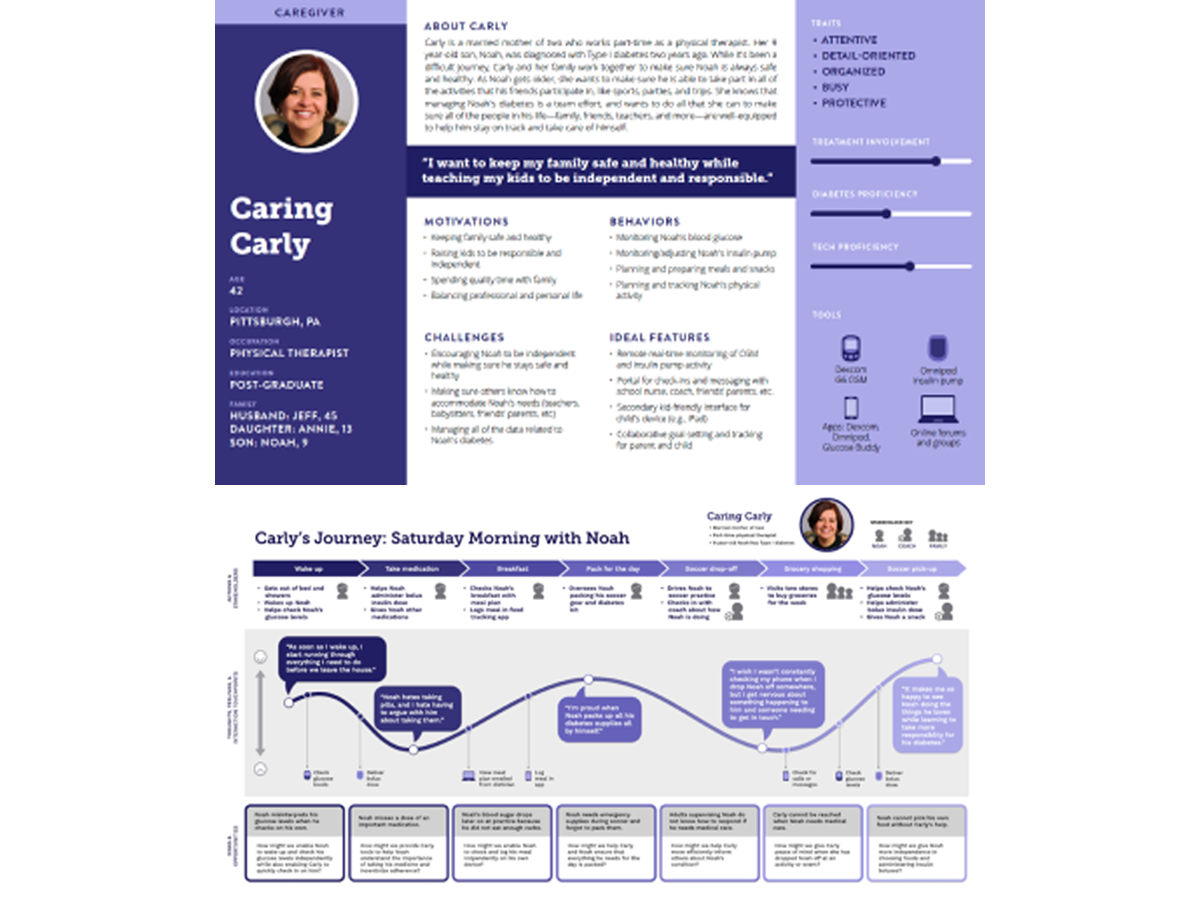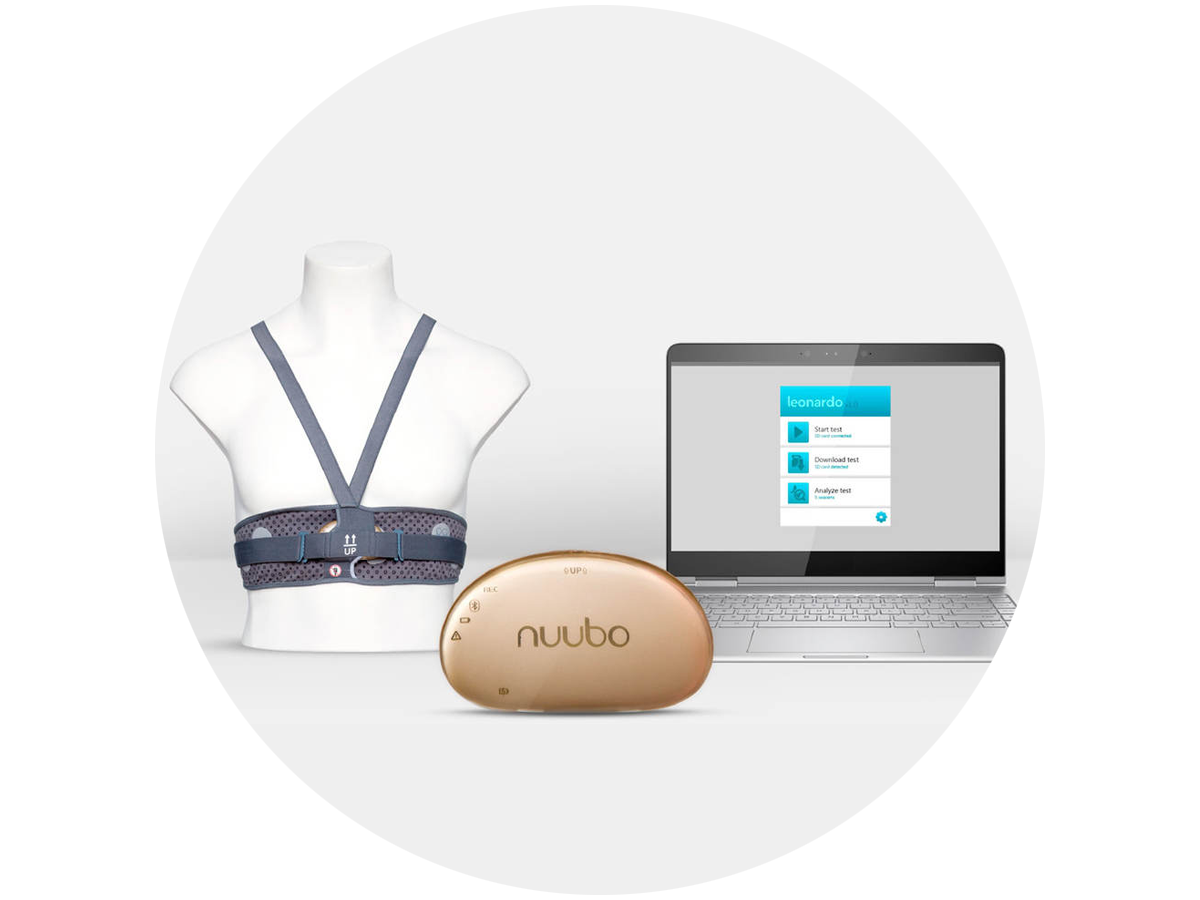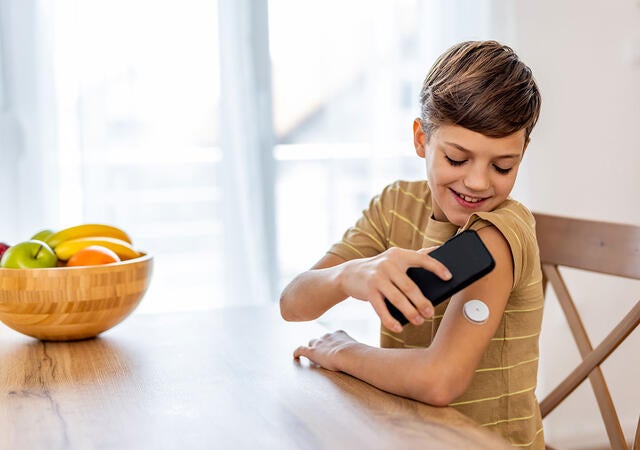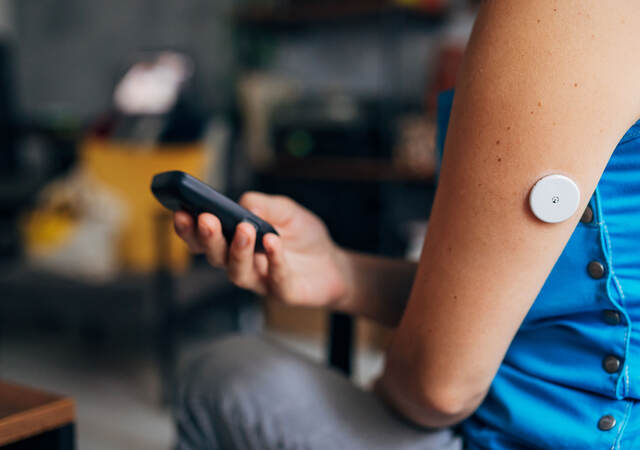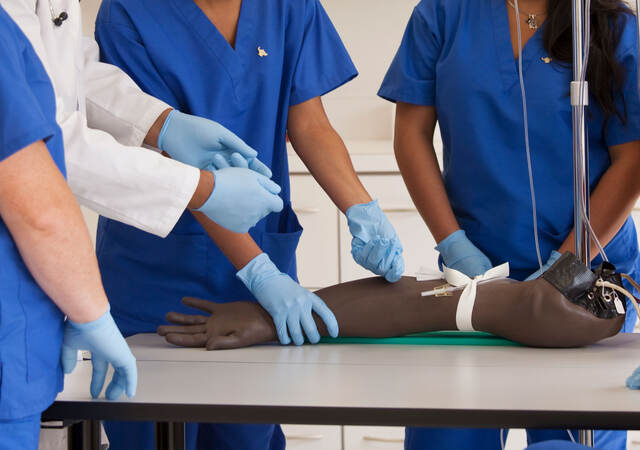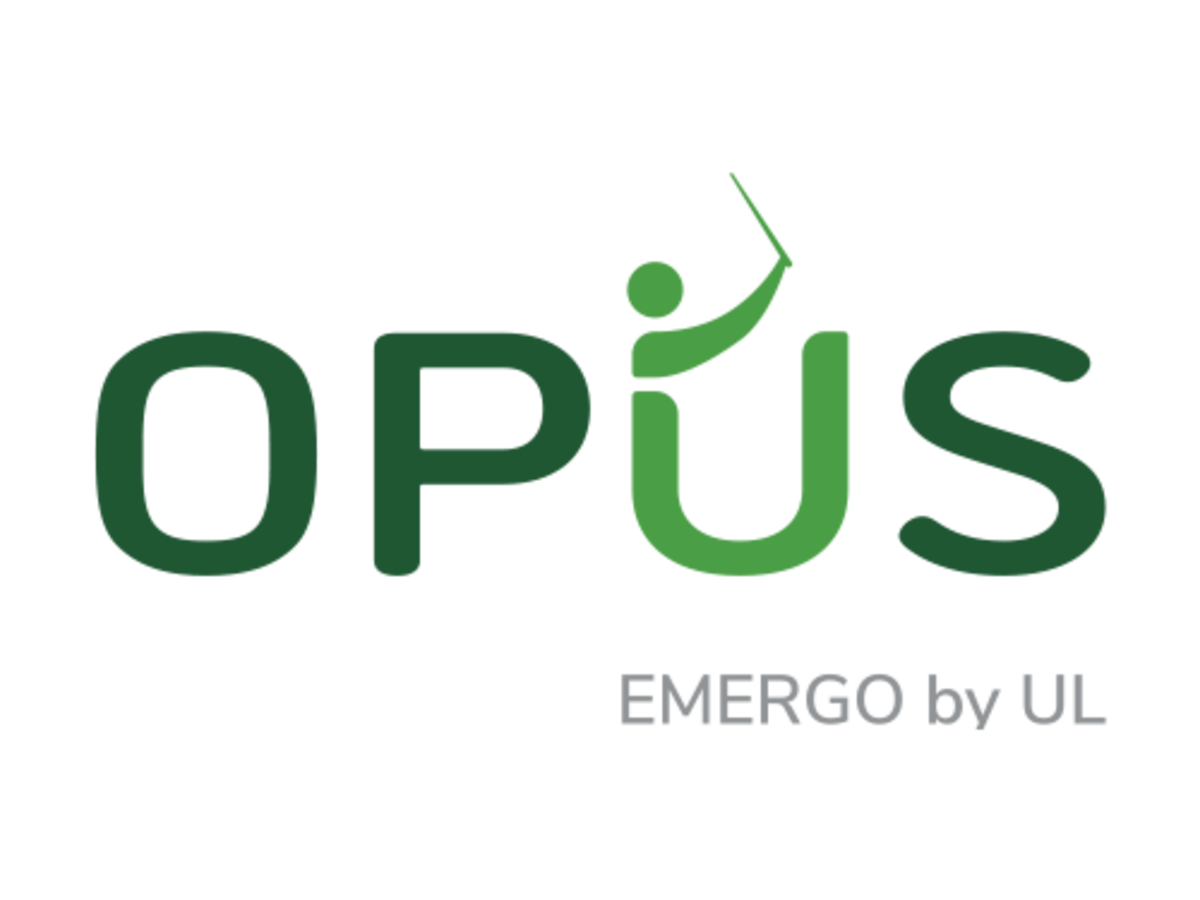Understanding and meeting user needs through research
Focusing on user needs and potential risks early in the design process positions organizations for successful development of safer, more competitive and more desirable medical devices while reducing business risks, such as recalls and returns. User research leads to a richer understanding of the factors that will impact the experiences people will have with your product:
- Users’ physical and cognitive characteristics, as well as their goals and needs
- The use environment, social and cultural influences
- User workflows, behaviors and interactions
Focus your team’s efforts with user research deliverables
Align your team with detailed reports, journey maps, personas and more to guide product development and enhance user experience. These deliverables include:
- Detailed, illustrated narrative reports
- Journey maps
- Personas
- User profiles and use environment descriptions
- Stakeholder highlight presentations
Diverse methods for global user research
Conduct comprehensive user research globally using methods like observations, interviews and surveys to uncover user insights. We collaborate with development teams to translate user research insights into design inputs, such as user interface requirements, user journeys, prioritized features, strategic road maps and HFE documentation, e.g., use specifications, task analyses and use-related risk analyses. These inputs help ensure the ultimate creation of robust and delightful user-centered design solutions.
Our foundational user research methods and tools, such as observations, longitudinal studies, interviews and benchmark tests, provide powerful, user-focused insights to product design and development project teams.
User research activities tailored to specific challenges
Observations
Direct observation is the key to understanding user needs and preferences for a new product. During observations, we record users’ comments and the time spent on various tasks, as well as document key characteristics of the use environment and any points of friction between people and equipment. For example, we might observe how anesthesiologists interact with their workstations and note that the clinician needs a larger work surface to prepare injections and complete paperwork.
Benchmark tests
Benchmark tests are the starting point for further usability testing. We learn a lot about user needs and preferences by conducting usability tests of existing devices. Sometimes, we test an existing product as a precursor to designing its replacement. Other times, we test competitors’ products to establish benchmarks that, in turn, form a basis for user interface requirements and broader product development goals related to a new product’s user experience and product features and functionality.
Surveys
Questionnaires, typically sent to a large number of participants across a broad geographic region, are designed to collect quantitative data to identify trends and preferences and collect input from a large sample of representative users.
Diary studies
Diary studies, among other ethnographic methods, enable us to collect qualitative data about user behaviors and product usage over time via ongoing insights from representative end-users and responses to carefully crafted follow-up questions throughout the product experience.
Post-market device usability evaluation
We conduct product assessments, including design reviews and usability tests, of marketed products to gain benchmark performance data and uncover interaction problems.
Benchmark performance data
Benchmark performance data forms the foundation for developing a next-generation or competing product. For example, conduct a usability test on the perceived ease of setting up a dialysis machine for treatment as a basis of comparison for future design concepts.
User interaction-oriented performance data
User interaction-oriented performance data upon which to base a marketing claim. For example, conduct a study with people with diabetes to determine which lancing device is easiest to use and causes the least pain.
Reported interaction problems
Reported interaction problems that might have led to product complaints, returns or other failures. For example, perform an expert review of the user interface of a recalled surgical device to determine the root cause of use errors that led to harm and suggest design changes as part of a broader corrective and preventative action effort.
One-on-one and group interviews
Interviews generate comprehensive insights from users that complement the data gathered through observations and benchmark tests. Our research team uses a range of interview methods to gather different kinds of user feedback.
Contextual inquiry
Interviews in an actual use setting while people perform tasks, enabling real-time collection of user feedback in context. For instance, we might ask physicians about using an electronic prescription pad when they write prescriptions or ask individuals with a rare disease how they manage their treatment regimen while preparing and administering an injection.
In-depth interviews
One-on-one interviews (in-person or remote) enable a deep dive into individual needs and preferences.
Group interviews
Group discussions, also called focus groups, are a valuable complement to observations and in-depth interviews. We conduct group interviews to collect many opinions quickly and reach group consensus on specific topics, including product design attributes and alternatives.
Case study
“The learning from the process has proven critical in the market, as now more than ever before, the product's usability is key for hospitals to adopt your product. UL's capability to adapt to a startup company was impressive.”
Nuubo®
Human Factors Software
Optimal Product Usability Suite (OPUS™)
Emergo by UL’s cloud-based human factors engineering (HFE) platform leverages training, tools, templates and regulatory guidance to help you stay ahead in your HFE activities.
Medical device research leads to a richer understanding of the human factors affecting the quality of user interactions with your products
Contact us to see how our team can help drive critical design decisions pivotal for regulatory approval and commercial success.




